This post may contain affiliate links. Please read our disclosure policy.
This Spring Spaghetti Carbonara is what pasta dreams are made of! Creamy noodles tossed with spring-time vegetables and crispy pancetta, I absolutely adore this recipe.
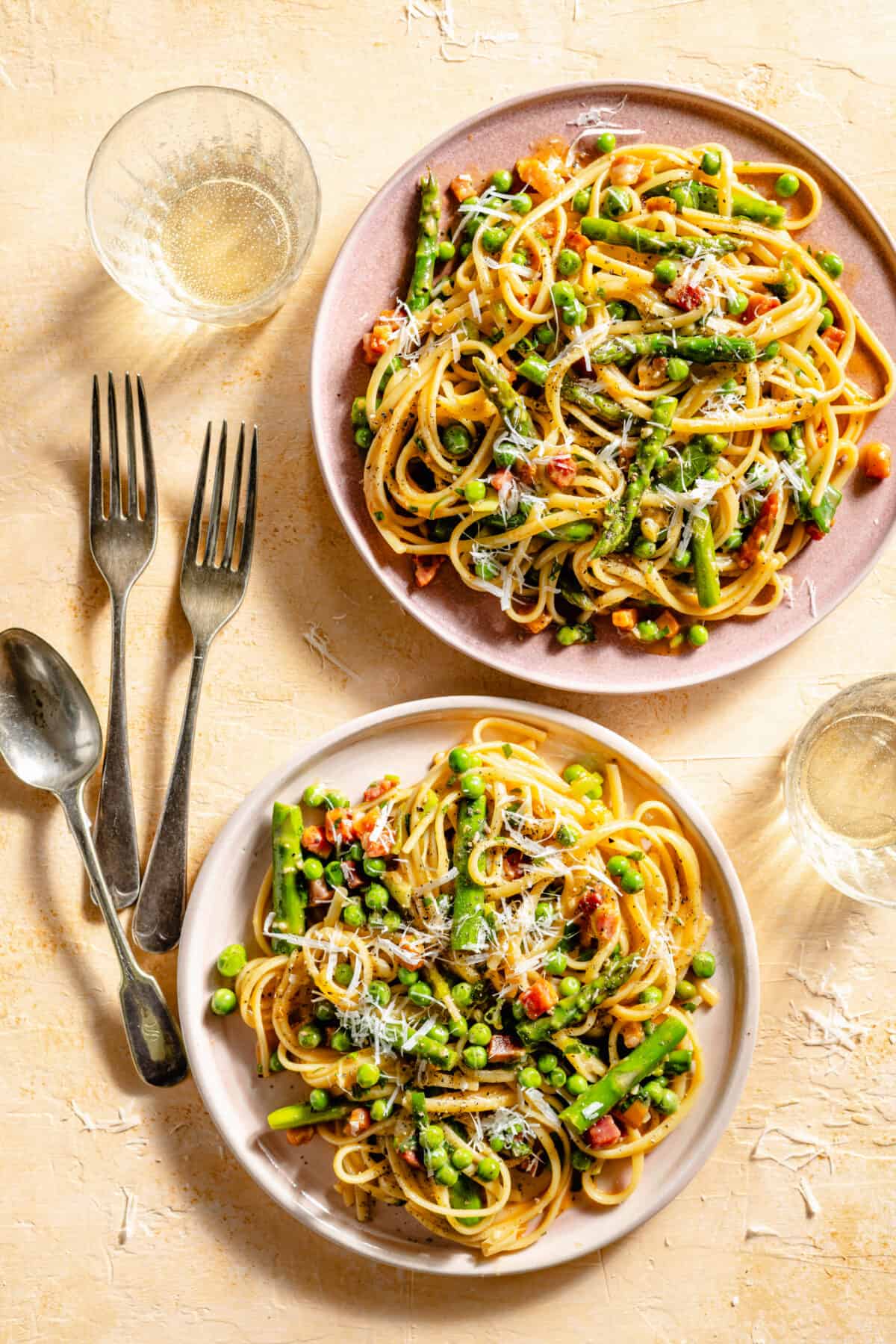
In this day in age, pasta gets a bad rep. I am here to remind you that a bowl of pasta is always a good idea! So let’s cook Spring Spaghetti Carbonara, shall we?
Carbonara is an Italian pasta dish from Rome made with egg, hard cheese, and black pepper. I’ve given a traditional carbonara a few tweaks to add some springtime vegetables to it and brighten it up a bit and add some additional nourishment. It’s perfect for weekends in with those you love and I think you’ll just love this dish!
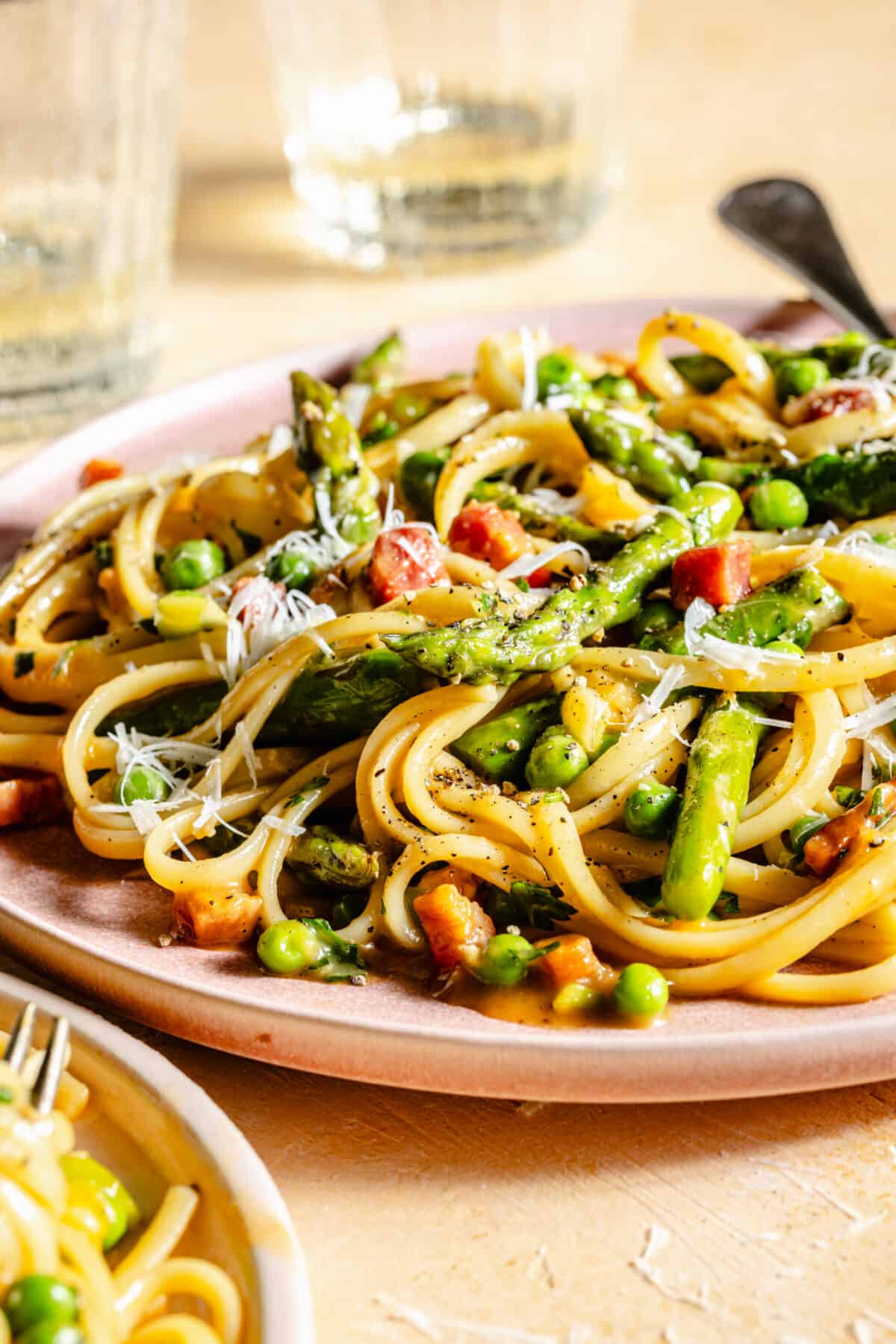
Ingredients:
- Linguine Pasta: Sub gluten-free pasta
- Pancetta
- Asparagus
- Green Onions
- Garlic
- Fresh English Peas: Frozen works too
- Whole Eggs plus Additional Egg Yolks
- Fresh Parsley
- Grated Pecorino Romano Cheese
- Salt
- Freshly Ground Black Pepper
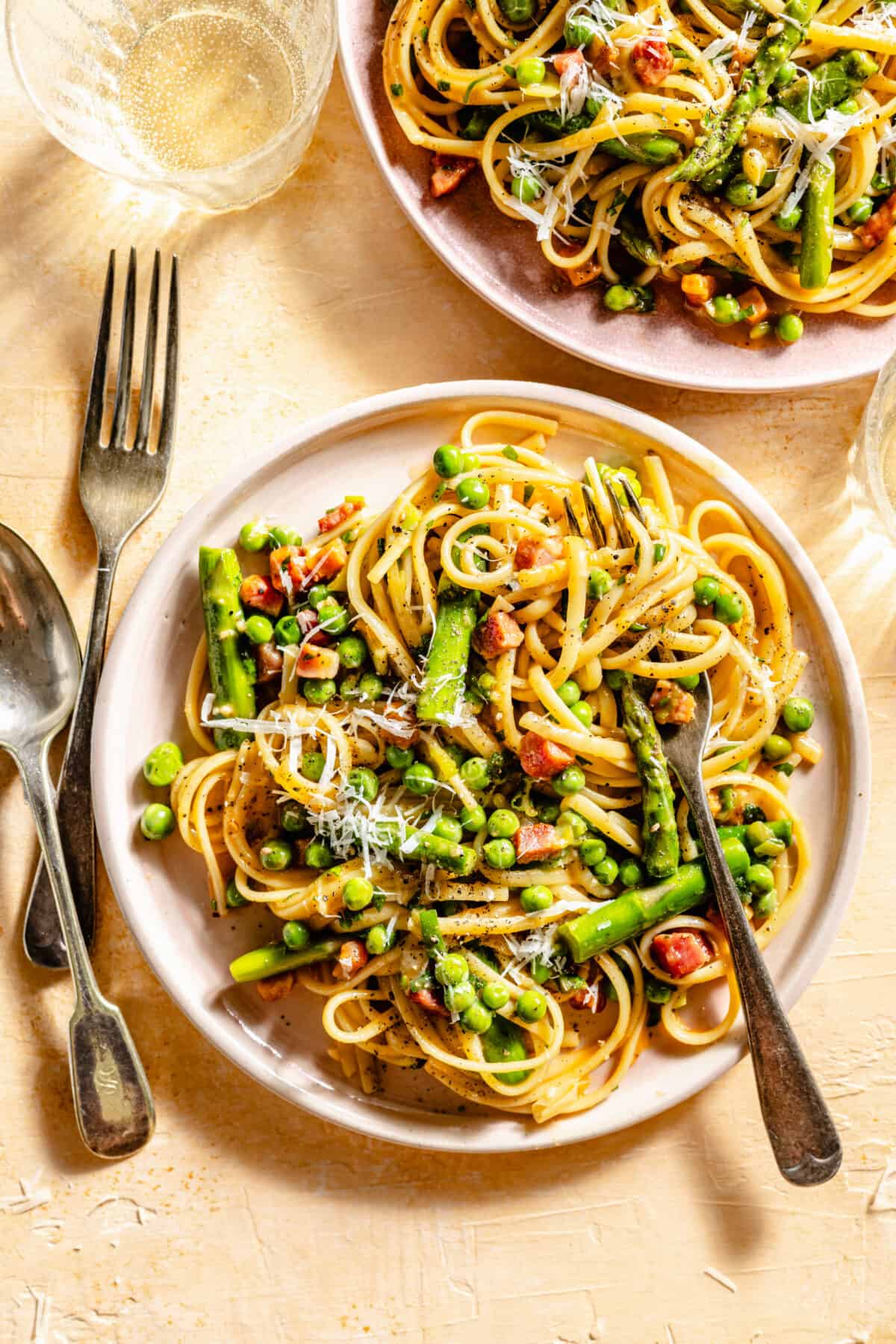
Step-by-Step:
Step One: Cook Pasta
Bring a large pot of water to a boil. When the water is boiling, cook pasta according to package instructions. Reserve about 1 cup of the pasta water (we will use it later), then drain the cooked pasta and set aside.
Step Two: whisk the sauce
Meanwhile, in a small bowl, whisk together the eggs, egg yolks, pecorino cheese, parsley, salt, and pepper. Set aside.
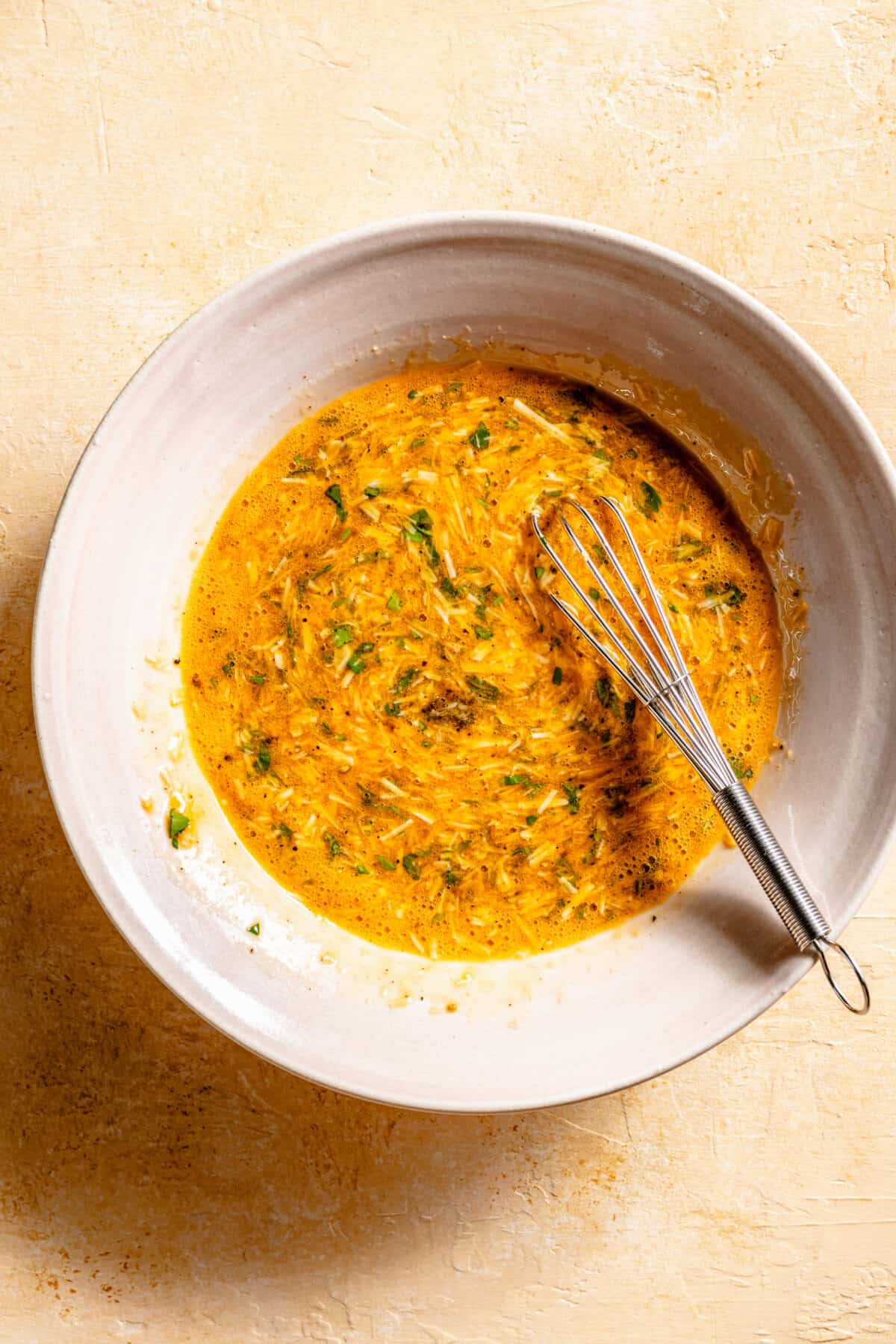
Step Three: Crisp the pancetta
Meanwhile, heat a large skillet over medium-high heat. Add the cubed pancetta and let cook until lightly crisp, about 6 minutes. Use a slotted spoon to transfer the crisp pancetta to a plate. Set aside.
Step four: Cook the asparagus
Reduce the heat to medium and in the same skillet with the rendered fat, add the asparagus, and cook, stirring and scraping up any brown bits on the bottom of the skillet, until the asparagus is just slightly tender, about 4 minutes.
Step Five: Add the Onions, Garlic, and peas
Add the green onions and garlic. Continue to cook, stirring and being careful not to burn the garlic, for another 1 to 2 minutes. Add the peas and 1/4 cup of the reserved pasta water and cook, stirring, until the peas are tender and the water has evaporated, 3 to 4 minutes.
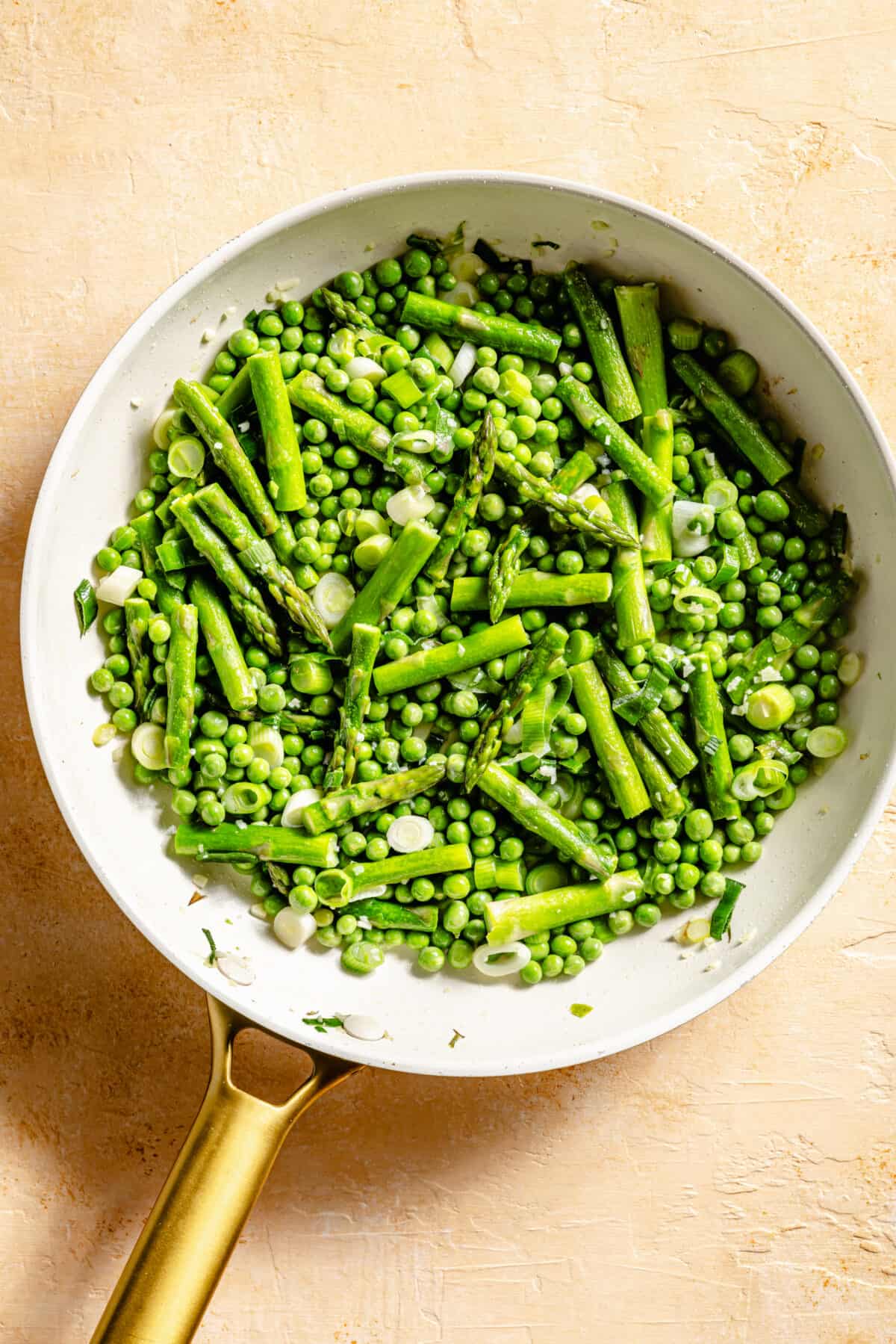
Step Six: Add the pancetta and pasta
Add the pancetta (and any of its juices), plus the drained, cooked pasta into the skillet and toss until well combined with the veggies. Add 1/4 cup of pasta water at a time to rehydrate the pasta so that it is no longer dry and heat until nice and hot.
Step Seven: toss with egg mixture
Transfer the hot pasta to the bowl with the egg mixture and continually toss until very well coated in the sauce and glossy. If for any reason your pasta sauce gets too thick, you can thin it out with a little pasta water.
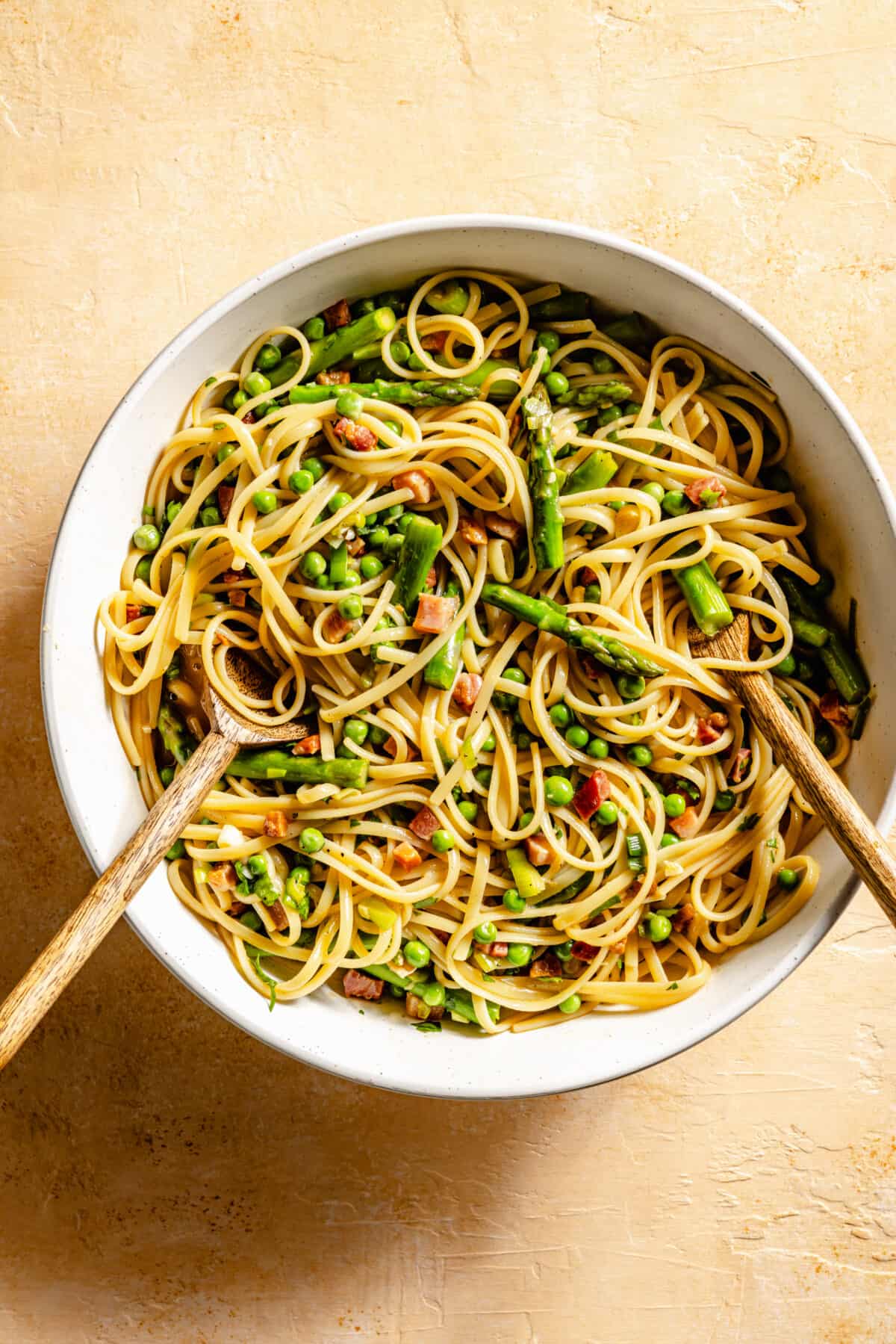
Step Eight: Serve and Enjoy!
Served topped with a sprinkle more of pecorino cheese, black pepper, and parsley, if desired.
Recipe FAQs:
You will use this to steam the peas and to help form your sauce as needed.
I do this to prevent the eggs in the sauce from overcooking/curdling and lead to a grainy, unappetizing sauce instead of a smooth and creamy sauce. The eggs will gently cook from the heat of the hot pasta and veggies as you toss.
The sauce is made with raw egg yolks and is cooked by the heat from the cooked pasta. Technically, the hot pasta should gently cook the egg. I use pasteurized eggs.
There is a risk of consuming raw or undercooked eggs. If you are pregnant or immunity compromised, I would recommend avoiding raw eggs as a precaution. I recommend trying my Creamy Linguine with Lemon and Pancetta recipe instead.
I hope you enjoy this Spring Spaghetti Carbonara for many meals to come!
For More Pasta Recipes:
Creamy Linguine with Lemon and Pancetta
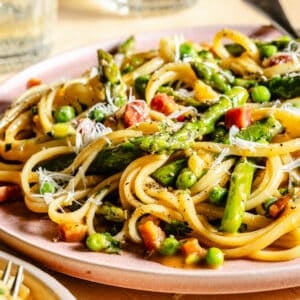
Spring Spaghetti Carbonara
Ingredients
- 12 ounces linguine pasta (sub gluten-free pasta)
- 3 whole eggs
- 3 egg yolks
- 3/4 cup grated pecorino romano cheese, plus more for serving
- 2 tablespoon finely chopped parsley, plus more for serving
- 1/2 teaspoon kosher salt
- 1 teaspoon freshly ground black pepper, plus more for serving
- 1/2 lb pancetta, cut into 1/4 inch cubes
- 1 bunch asparagus, woody ends removed and cut into 2 inch pieces
- 3/4 cup green onions, sliced
- 3 garlic cloves, minced
- 8 ounces fresh English peas (frozen okay)
Instructions
- Bring a large pot of water to a boil. When the water is boiling, cook pasta according to package instructions. Reserve about 1 cup of the pasta water (we will use it later), then drain the cooked pasta and set aside.
- Meanwhile, in a small bowl, whisk together the eggs, egg yolks, pecorino cheese, parsley, salt, and pepper.
- Meanwhile, heat a large skillet over medium-high heat. Add the cubed pancetta and let cook until lightly crisp, about 6 minutes. Use a slotted spoon to transfer the crisp pancetta to a plate. Set aside.
- Reduce the heat to medium and in the same skillet with the rendered fat, add the asparagus, and cook, stirring and scraping up any brown bits on the bottom of the skillet, until the asparagus is just slightly tender, about 4 minutes.
- Add the green onions and garlic. Continue to cook, stirring and being careful not to burn the garlic, for another 1 to 2 minutes.
- Add the peas and 1/4 cup of the reserved pasta water and cook, stirring, until the peas are tender and the water has evaporated, 3 to 4 minutes.
- Add the pancetta (and any of its juices) and the drained, cooked pasta into the skillet and toss until well combined. Add 1/4 cup of pasta water at a time to rehydrate the pasta so that it is no longer dry and heat until nice and hot.
- Transfer the hot pasta to the bowl with the egg mixture and continually toss until very well coated in the sauce and glossy. If for any reason your pasta sauce gets too thick, you can thin it out with a little pasta water.
- Served topped with a sprinkle more of pecorino cheese, black pepper, and parsley, if desired.
Nutrition
Nutrition information is automatically calculated, so should only be used as an approximation.
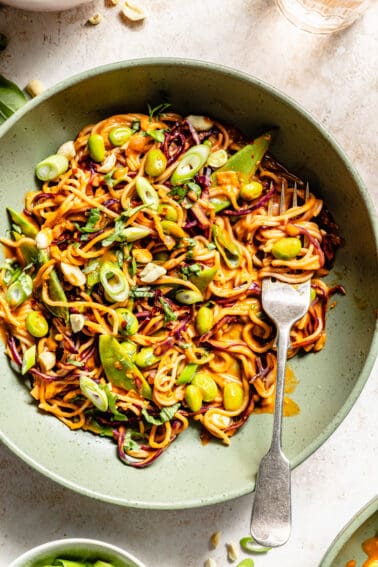
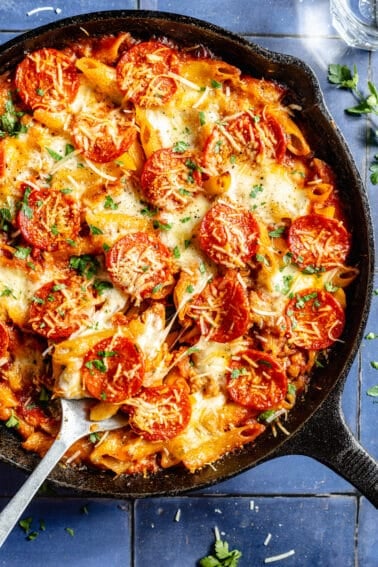
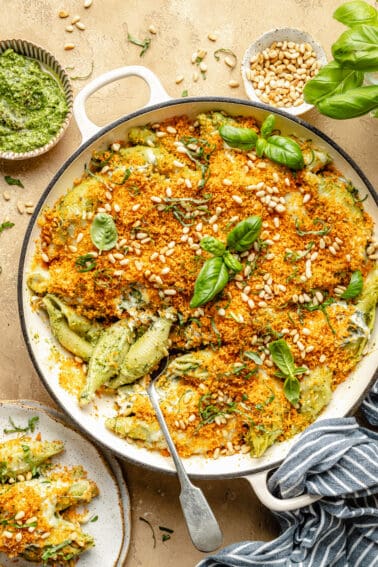
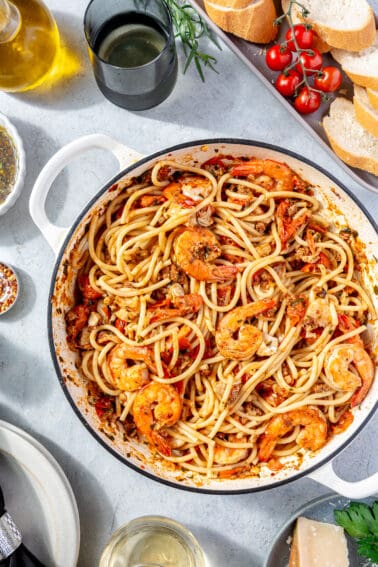
Raw eggs???
What makes carbonara different from other pasta dishes is the technique of combining eggs, hard cheese, cured pork, and black pepper into a rich, silky sauce. The raw eggs are gently cooked by the heat of the pasta. There is always a risk with raw eggs- I always use pasteurized eggs and personally feel comfortable– and technically if done correctly your eggs should be cooked by the time it touches your fork if done correctly.
I love this recipe! I have made it several times now and it is always a hit
I can’t seem to get the eggs to not cook. Does the pasta have to be vol? What temperature is the pasta when you add the eggs?
Is it a total of 6 eggs? 3 whole eggs, and 3 egg whites?
It is 3 whole eggs and 3 egg yolks for 6 total needed.
For the sauce do you use 3 whole eggs plus an additional 3 egg yolks? Or just 3 whole eggs? Can’t wait to give this a try!
I used just 3 eggs tonight and it turned out delicious. What did you end up doing?